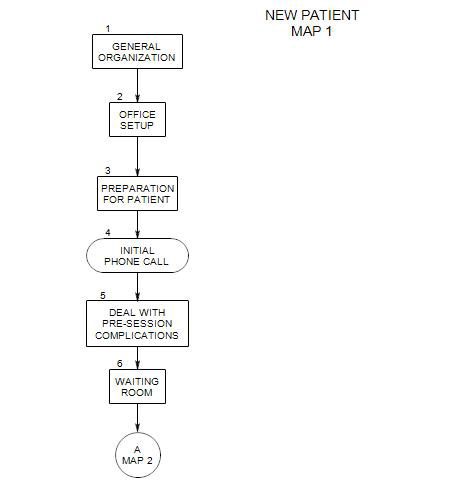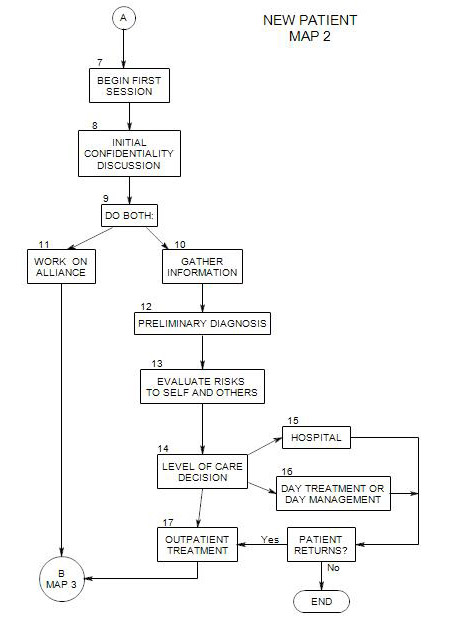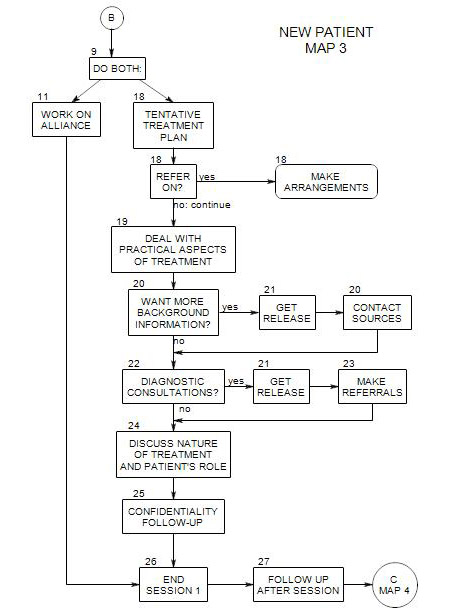-
Follows Section 13 on Map 2
14a. Initial Decision
Here we must decide on the overall level of care that the patient needs, based on information already collected. Several levels of care are possible, differing in the amount of support and control, and intensity of treatment that they offer:
- hospitalization [ Section 15 ]
- day treatment [ Section 16 ]
- outpatient therapy [ Section 17 ], possibly supplemented by external supervision or participation in a self-help group
- outpatient therapy alone
- counseling
- no treatment
At this point in the treatment process, our primary basis of choosing level of care is the safety of the patient and others close to the patient. [See Section 9 for dangers.] Second is the probable effectiveness of the treatment for overall patient stabilization and relief of the patient’s symptoms.
Other considerations:
- the patient’s mental status.
- the amount of available support.
- a need to detox the patient.
- the patient’s motivation and willingness to continue.
- diagnostic considerations, which may lead you to see some people as unable to benefit from treatment.
Levels of need may be classified:
- emergency, when the patient is at such risk that he/she can’t be trusted to survive without substantial care
- very serious, when hospitalization is needed to stabilize or to avoid self destructive behavior in case of slight additional stress
- substantial, day care is needed to give an adequate amount of treatment and help avoid self-destructive behavior
- less urgent, if the patient can reasonably be treated by outpatient psychotherapy
- minimal. We generally assume that most people can benefit from some form of psychotherapy, especially if they present to a therapist for treatment. However, some people may be doing fine without it, and the benefits may be outweighed by other considerations. We need to be cautious here, because some people may present themselves and then deny the need defensively, so we probably wouldn’t send anyone away after a single session.
14b. Review Level of Care Decision
As you work with a patient over time, you will learn more about the severity of his/her issues. You may decide, as you learn more about the patient, that a different level of care is necessary. It is a condition of the work that we need to modify our understanding as we learn more, and that can lead to a change to more appropriate forms of treatment.



